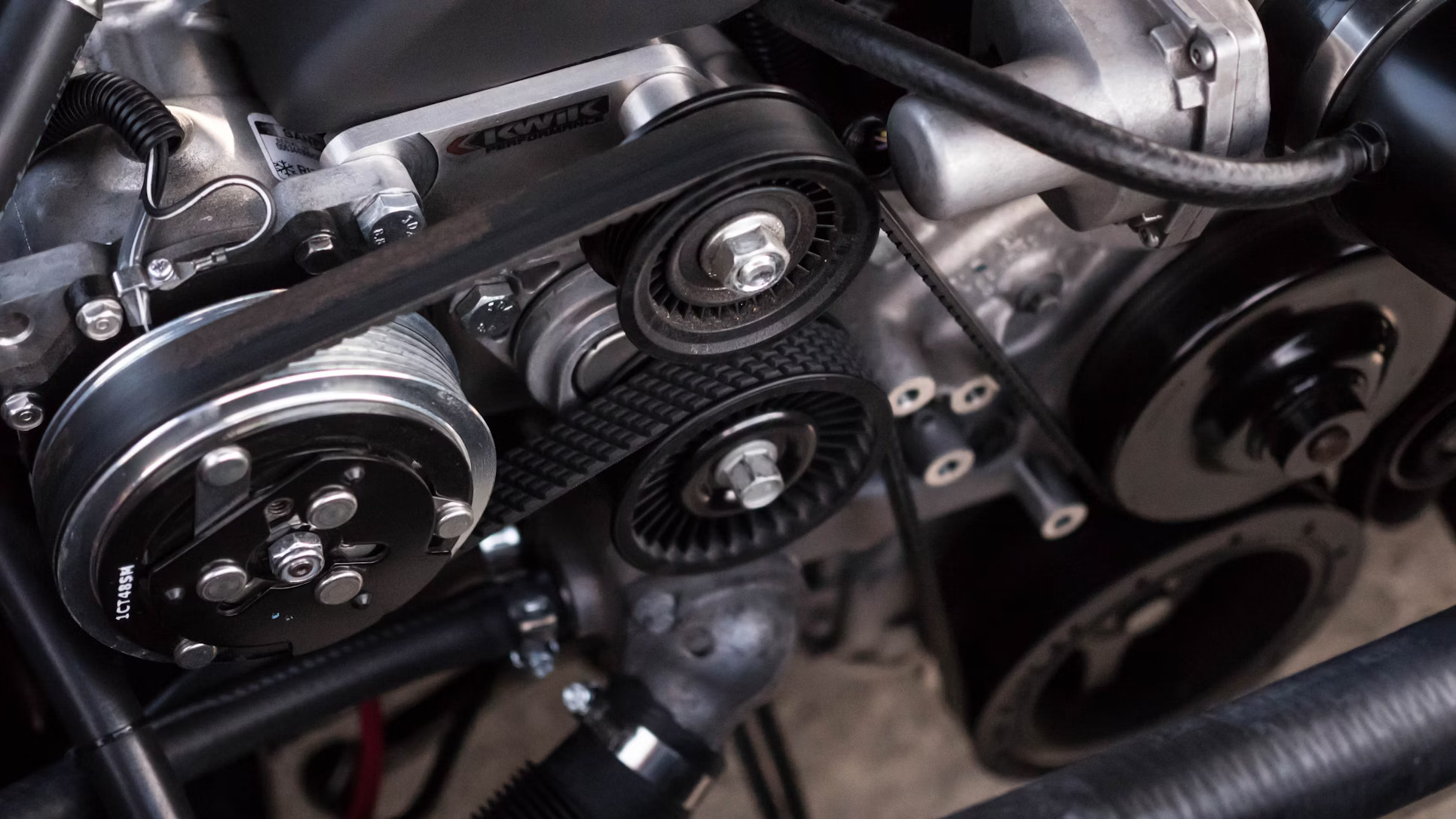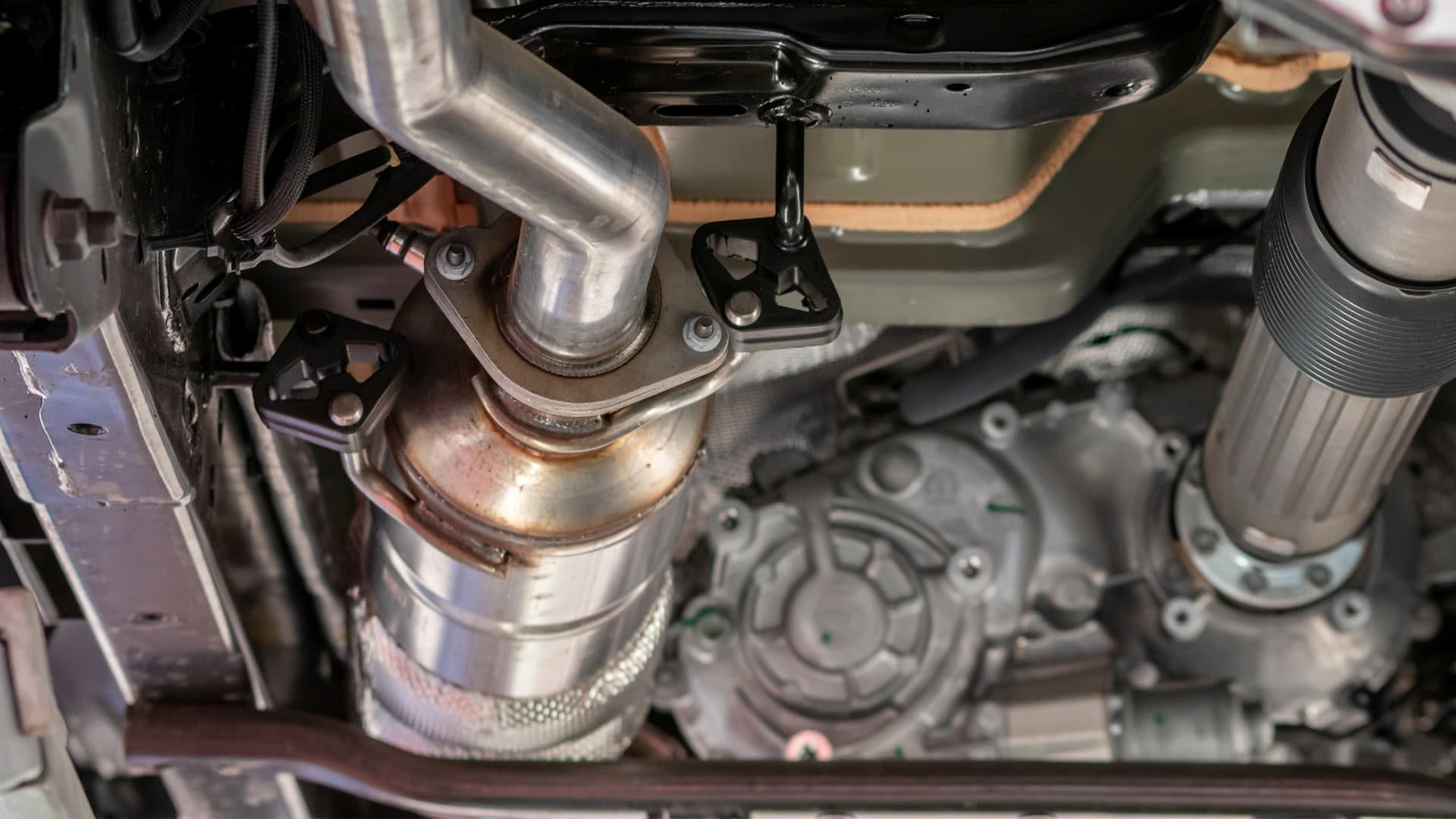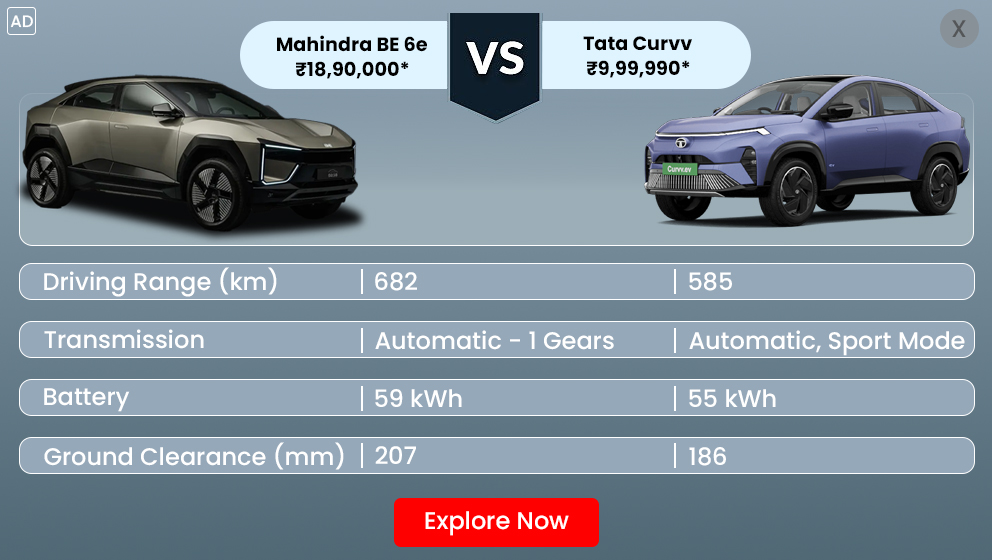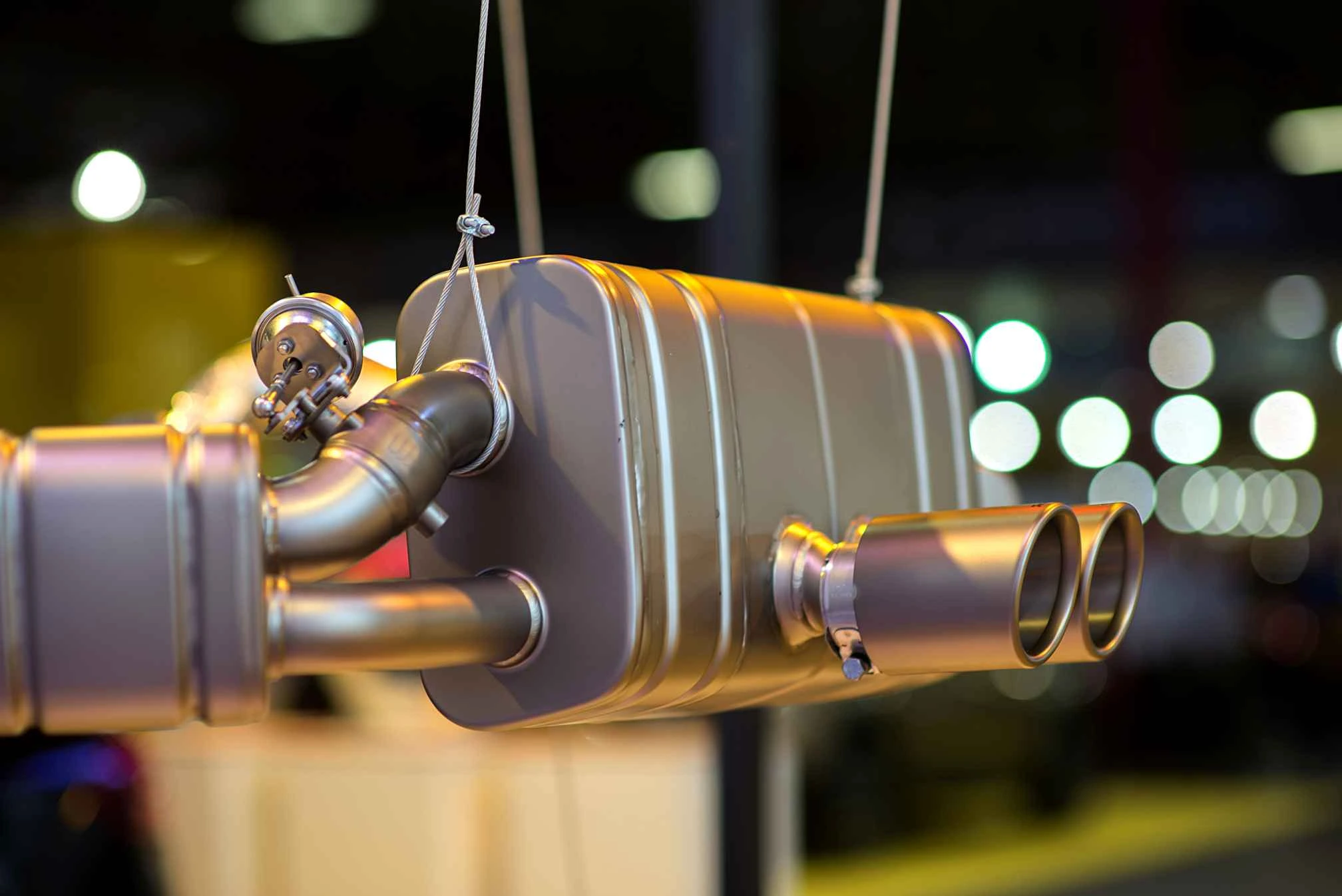The Catalytic Converter in a Car plays a critical role in making vehicles more eco-friendly and compliant with emission standards. As environmental regulations tighten worldwide, this small yet powerful component has become indispensable. It reduces harmful emissions, protects air quality, and ensures your vehicle runs smoothly.
Whether you’re a car enthusiast, daily commuter, or someone preparing for a vehicle inspection, understanding the Catalytic Converter in a Car can help you save money, avoid legal issues, and maintain your vehicle’s performance. This guide will explore its working mechanism, different types, warning signs of failure, theft protection, and replacement insights.
What Is a Catalytic Converter?

A catalytic converter in a car is a key part of the exhaust system located between the exhaust manifold and the muffler. Its primary job is to transform harmful gases produced by the engine’s combustion process into less harmful substances before they are released into the atmosphere.
It achieves this transformation through chemical reactions involving precious metals like platinum, palladium, and rhodium. These metals act as catalysts to trigger oxidation and reduction processes that break down toxic gases.
Key Functions of a Catalytic Converter:
- Converts carbon monoxide into carbon dioxide.
- Breaks down nitrogen oxides into nitrogen and oxygen.
- Oxidizes unburned hydrocarbons into carbon dioxide and water.
- Reduces harmful exhaust emissions and helps meet EPA regulations.
How Does a Catalytic Converter Work?
Understanding how a catalytic converter works can help you detect early issues and prevent expensive repairs. The converter is a metallic casing that houses a ceramic honeycomb structure coated with catalytic metals.
When exhaust gases pass through the honeycomb, they interact with the catalyst surface, initiating chemical reactions. These reactions convert toxic pollutants into less harmful compounds.
- Reduction Catalyst: Removes nitrogen atoms from nitrogen oxides, releasing oxygen.
- Oxidation Catalyst: Converts carbon monoxide and hydrocarbons into carbon dioxide and water.
In short, the catalytic converter in a car acts like a mini-chemical laboratory, cleaning harmful emissions before they exit through the tailpipe.
Types of Catalytic Converters

There isn’t a one-size-fits-all converter. The types of catalytic converters depend on vehicle type, fuel, and emission standards.
1. Two-Way Catalytic Converter
- Used in: Cars built before 1981.
- Function: Oxidizes hydrocarbons (HC) and carbon monoxide (CO) into carbon dioxide (CO₂) and water (H₂O).
- Key Points:
- Simple design.
- Limited emission control.
- No NOx reduction capability.
2. Three-Way Catalytic Converter
- Used in: Post-1981 petrol cars (modern standard).
- Function:
- Oxidizes hydrocarbons and CO.
- Reduces nitrogen oxides (NOx).
- Key Points:
- Most common in modern cars.
- Provides complete emission control.
- Essential for meeting BS6 and EPA standards.
3. Diesel Oxidation Catalyst (DOC)
- Used in: Diesel engines.
- Function: Converts CO and hydrocarbons to CO₂ and water using oxygen.
- Key Points:
- Works differently from gasoline converters.
- Often paired with Diesel Particulate Filters (DPF).
- Helps reduce soot and black smoke.
5 Signs Your Catalytic Converter is Failing
A bad catalytic converter can drastically affect your vehicle’s performance and emission levels. Detecting early signs can save you from expensive repairs or replacements.
1. Declining Fuel Efficiency
When the converter clogs, the engine has to work harder, burning more fuel than usual.
Key Points:
- Noticeable drop in mileage.
- The engine may run hotter.
- Higher fuel costs.
2. Check Engine Light Warning
Modern vehicles use oxygen sensors to monitor exhaust gases. If the converter isn’t working efficiently, the check engine light will illuminate.
Key Points:
- Use an OBD-II scanner to confirm the issue.
- Often triggered by low converter efficiency.
- Ignoring it may lead to costly repairs.
3. Rotten Egg or Sulfur Smell
A failing catalytic converter may not convert hydrogen sulfide properly, resulting in a sulfur or rotten egg odor.
Key Points:
- Strong odor from the tailpipe.
- Indicates internal damage.
- Immediate inspection is needed.
4. Poor Acceleration and Engine Performance
A clogged converter can increase exhaust back pressure, causing sluggish performance.
Key Points:
- The car may jerk or stall on acceleration.
- Exhaust flow is restricted.
- Reduced power output.
5. Failed Emissions Test
A failing converter can cause your vehicle to emit more pollutants, leading to a failed test.
Key Points:
- High levels of CO, NOx, or HC were detected.
- Mandatory repair or replacement required.
- May result in fines or registration issues.
Catalytic Converter Prevention
Catalytic converter theft has surged globally due to the valuable platinum, palladium, and rhodium inside. Thieves target vehicles with easy-to-access converters, often cutting them out in minutes.
- Install Anti-Theft Shields: Steel plates make it harder to remove.
- Engrave VIN Number: Discourages resale in black markets.
- Park in Well-Lit Areas: Theft often happens in secluded spots.
- Check Insurance Coverage: Many insurers cover catalytic converter theft claims.
If your converter is stolen, report it immediately to the police and insurance company. Replacement is costly, so prevention is key.
Key Features of a Good Catalytic Converter
When choosing a new converter, consider these features:
- High-quality precious metals for long-lasting efficiency.
- Corrosion-resistant honeycomb structure for durability.
- Compatibility with your car model and engine.
- Warranty and emission compliance with BS6 or EPA standards.
- Better fuel efficiency and lower emissions.
Is a High-Flow Catalytic Converter Right for Your Car?
Performance enthusiasts often consider upgrading to a high-flow catalytic converter.
Advantages:
- Increased exhaust flow improves engine performance.
- Better throttle response and acceleration.
- Maintains emissions compliance (when approved).
Disadvantages:
- May not pass emissions tests in some regions.
- Higher initial cost.
- It can affect backpressure if not matched with the correct exhaust system.
Always consult a certified mechanic before installing performance parts.
Maintaining and Cleaning

While replacement is sometimes necessary, regular maintenance can extend its life.
Simple Maintenance Tips:
- Use high-quality fuel to minimize carbon buildup.
- Keep your oxygen sensor in good shape.
- Address engine misfires immediately.
- Consider periodic catalytic converter cleaners.
- Avoid driving with unresolved check engine issues.
Regular care ensures your converter functions efficiently and helps avoid costly repairs.
Environmental Impact of Catalytic Converters
The Catalytic Converter in a Car plays a critical role in reducing air pollution. Breaking down harmful exhaust gases contributes to cleaner air and compliance with EPA regulations. Reduce smog-forming gases.
- Lower carbon monoxide emissions.
- Protect public health and the environment.
This makes catalytic converters not just a car part, but a tool for a more sustainable future.
Quick Comparison
|
Feature |
Two-Way Converter |
Three-Way Converter |
Diesel Oxidation Catalyst |
|
Emissions Reduced |
Hydrocarbons (HC), Carbon Monoxide (CO) |
Nitrogen Oxides (NOx), HC, CO |
HC, CO, Particulate Matter (PM) |
|
Common In |
Pre-1981 vehicles |
Post-1981 & modern vehicles |
Diesel-powered vehicles |
|
Efficiency |
Moderate |
High |
High |
|
Compliance |
Basic emission standards |
EPA & Bharat Stage 6 |
Euro VI & Bharat Stage 6 |
|
Catalyst Used |
Platinum, Palladium |
Platinum, Palladium, Rhodium |
Platinum, Palladium |
|
Main Function |
Oxidation of HC and CO |
Reduction of NOx + Oxidation of HC and CO |
Oxidation of HC, CO, and PM to reduce diesel emissions |
Core Purpose of Catalytic Converters
The core purpose of a catalytic converter in a car is to minimize the environmental impact of vehicle emissions. By breaking down pollutants, it plays a direct role in improving air quality and reducing smog.
Key purposes include:
- Reducing harmful exhaust emissions.
- Improving urban air quality.
- Supporting emission compliance.
- Enhancing engine performance and fuel efficiency.
- Contributing to a cleaner and healthier environment.
Conclusion
The catalytic converter in a car isn’t just a mechanical part, it’s a legal requirement and an environmental guardian. Regular maintenance, timely inspections, and awareness of catalytic converter symptoms can help you avoid costly repairs.
By understanding how a catalytic converter works, recognizing warning signs, and taking theft prevention measures, you ensure your vehicle runs efficiently and remains eco-friendly.
Read Also This |
|
|---|---|
|
Nitrogen vs Normal Air in Tyres Which is the Better Choice for 2025 |
|






_1760338312.webp)



